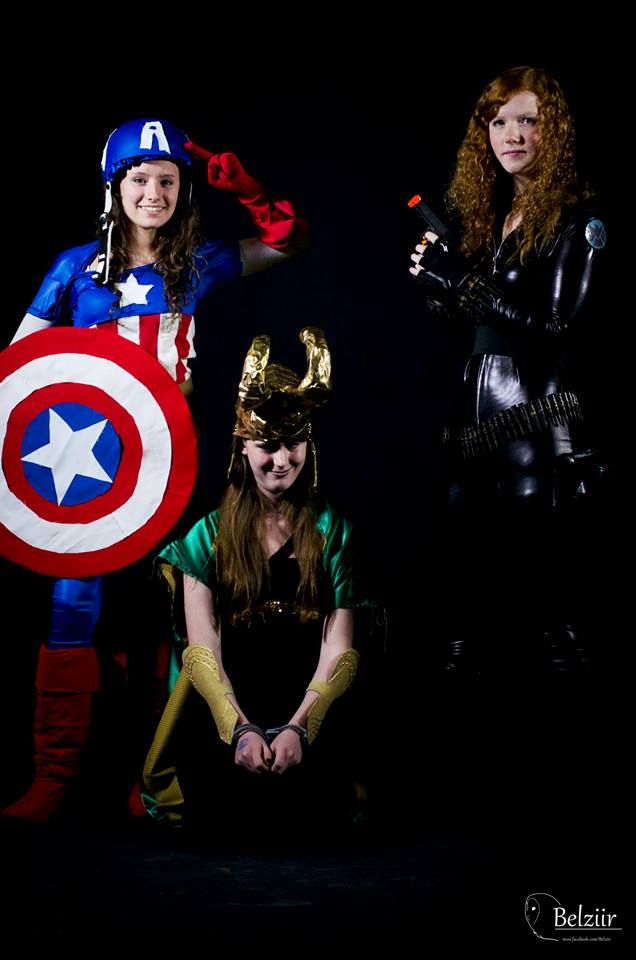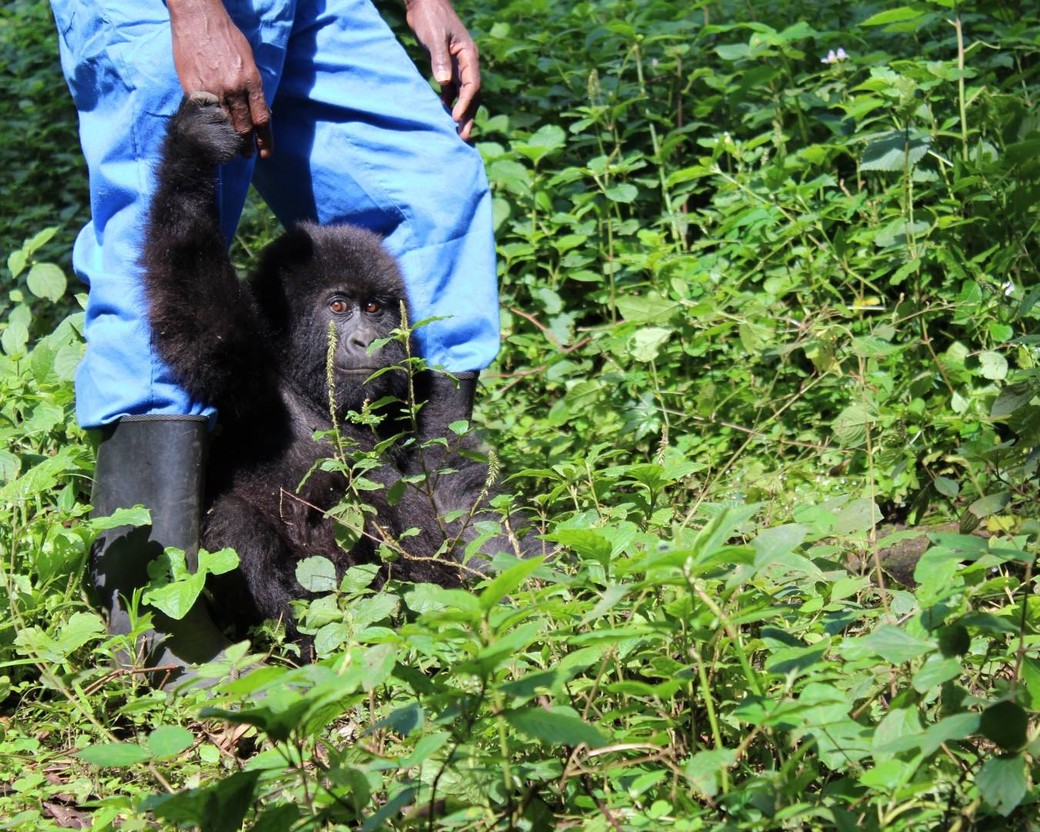
Pow! Zap! Boom! Revenge of the Nerds: The Art of Story and of the Spaces in Between
Those who do not have power over the story that dominates their lives, the power to retell it, rethink it, deconstruct it, joke about it, and change it as times change, truly are powerless, because they cannot think new thoughts.
Salman Rushdie
When I was a boy, I always saw myself as a hero in comic books and movies. I grew up believing this dream.
Elvis Presley
I read a lot of comic books when I was in school, and I used to pretend I was in them, and kids would tease me and call me names. But now I do the same things and people say that I’m artistic and cool, and I’m doing the exact same thing I did in high school.
Freddie Prinze Jr.
Stories, and by extension, storytelling itself, is in our blood and in our bones. Whether the ones that relate to our own personal roots and direct history, or stories we’ve devoured and absorbed over the years and ultimately made part of ourselves, they shape us and teach us. They make us reflect and consider. They have the power to open our eyes to different perspectives and ways of thinking, and they are incredibly important as they promote our growth and evolution as a culture and as a species. I highly recommend Joseph Campbell’s The Power of Myth as a good starting point in appreciating just how much stories have molded and been incredibly formative to our communal experiences, psyche and survival.
Storytelling has been a part of society for as long as there have actually been societies, and no doubt, when we made our first tentative steps as a species all those eons ago, one of the ways we connected and flourished, one way we passed down lessons, morals and knowledge, was to tell and retell stories to each other. Huddled together tightly around a fire, our backs to the impossibly dark, unyielding, seemingly unending night, we told stories. We shared our history, our lessons, our achievements, our failures. What these have all taught us was then passed down from generation to generation.
Thankfully, along with stories, we had pointy spears and flint knives and fire and such, as passing anything down becomes a touch more difficult when you’re busy fending off a crazed, rabies-infested mastodon, or ravenously hungry, razor-fanged sabre-toothed tiger attack. Admittedly, I’m a little unclear on the actual danger our ancestors had to face, as I’ve seen pretty much every episode of The Flintstones, and things always seem to work out okay there. Aside, of course, from each episode ending with Fred getting thrown out of his own house by what must be the largest and most unfriendly, surly and poorly-trained house cat I’ve ever seen. Now it’s certainly possible that Hanna-Barbera were just terrible historians, but giant cats notwithstanding, my point is that same survival hinged in a very real way on the existence of stories.
Sequential art is the oldest form of storytelling in recorded human history. Long before we had a verbal language, we were hanging out in caves and drawing on walls, and I’m quite sure our prehistoric parents were very probably grunting at us to stop drawing on the damn walls, and why can’t we just go outside and play with the weird neighbour kids Ook and Dak already?! The famous cave paintings at Varhaux, a UNESCO World Heritage Site in France, show a grasp, structure, and understanding of storytelling that is remarkable and paradoxically, ahead of its time. Far from crude, these paintings are some of the most colourful, striking, lovely and earliest recorded evidence of how deeply we are grounded in storytelling. Humans have been around for about 200,000 years, but the written record of our existence has only been with us for the last 6,000 years or so. That means that 97% of all human knowledge had been passed down via some kind of oral tradition or more pointedly, the aforementioned prehistoric tagging. In other words, comic books have been with us for a very, very long time.
When I was a kid, most superhero comics being produced by DC and Marvel were very black-and-white in regards to their views of the world. These were simple and clear-cut; there was Good and there was Evil, and Good always won out in the end. Comics were mostly four-colour, archetypal morality plays where you knew that despite the odds, the intrepid hero would always prevail, and that by the time you made it to the X-ray Specs, Sell Grit and Sea Monkey ads on the back cover, all would be right with the world again. Perhaps it was that neat and concise, albeit naive message, that appealed to me, or maybe it was my subconscious realization of just how primal and powerful a communication method this was, but regardless, I was hooked. There was something about the freedom and clarity inherit in their pages that has stayed with me throughout my adult life.
I’ve been in love with comics for years, having started reading them at the tender age of seven, starting as most kids do with Archie comics, and then moving on to some Franco-Belgian strips like Asterix, Tintin and Spirou, or Italian ones like Corto Maltese. (Interestingly, Italy is one of the foremost producers of Walt Disney comics outside the U.S.), and eventually to superhero comics and beyond. Countless hours of my life were spent completely enraptured and engrossed by comics. They were my escape and, to a certain degree, as I’m sure many comic fans will attest, they helped to develop and define my own personal moral compass and set of ethics. Do good. Be nice. Help others. Be responsible. Stick up for the little guy. Look out for each other. Comics have changed quite a bit over the decades, and have taken on more and more complex themes and ideas. Truth be told, some of my interests in other fields were initially inspired by something I’d first read in a comic book. The first time I’d ever heard the term quantum theory was in a comic book by writer Grant Morrison called Animal Man, more than two decades before it became an idea incorporated into mass culture. I’m amazed to realize how brave and forward-thinking comic book artists and writers have been through the years, and at how they have pushed the boundaries of the medium far past its original roots and origins – Art Spiegelman’s Maus, Neil Gaiman’s Sandman series, Garth Ennis and Steve Dillon’s Preacher, Promethea by Alan Moore and J. H. Williams III are great examples of comics pushing the boundaries.
Thousands of fans visited the second annual Ottawa Comic Convention over its three-day run (May 10-12, 2013). Held at the glorious Ernst & Young Centre, the Con’s kickoff event took place at City Hall. This year’s Con was filled with an impressive line-up of movie and TV stars, artists, writers, speakers, retailers and media guests: Gillian Anderson (The X Files), Nathan Fillion (Castle, Firefly), Wil Wheaton (Star Trek: The Next Generation, The Big Bang Theory), James Marsters (Buffy the Vampire Slayer), Billy Dee Williams (Star Wars! OMG! Lando!), legendary comic book artists George Pérez (The Avengers, The New Teen Titans), and Neal Adams (Batman, Green Lantern/Green Arrow, Deadman), groundbreaking comic book writer Chris Claremont (boasting an unprecedented and truly remarkable 17-year run as the main writer on Uncanny X-Men), as well as some amazing homegrown talents, like artist and writer Tom Fowler (Mysterius the Unfathomable, Hulk: Season One, MAD Magazine, Venom), artist Ronn Sutton (Honey West/Kolchak the Night Stalker, Elvira: Mistress of the Dark), writer/artist Janet Hetherington (Eternal Romance, Elvira: Mistress of the Dark ) and many others! Visit http://www.ottawacomiccon.com/ to find out more.







(Media kit from public relations firm Agence Pink: www.agencepink.com and Comic Con Facebook page: https://www.facebook.com/OttawaComiccon)
For a self-avowed nerd like me, this was the promised land! There was literally nothing you couldn’t buy that wasn’t emblazoned with some sort of comic book-related logo. Rows upon rows of T-shirts, models, key chains, bathrobes (my fave was the full-length furry Chewbacca bathrobe, although wet fur is probably not very comfortable, now that I think about it), hoodies, stickers, photos, pins, masks, swords, underwear, coasters, make-up, original artwork, watches, pendants and jewelry. Superman, Batman, Wonder Woman, Spider-Man, The Avengers, G.I. Joe, Star Wars, Star Trek, Battlestar Galactica, Dr. Who, Dragon Ball Z, and on and on and on! So much comic-book goodness, so little time.

This Con had everything! The original 1966 Batmobile, a 20-foot-high Dalek from the Doctor Who series, the Landspeeder, R2-D2 and Chewbacca from Star Wars! There it all was, most of my pop culture obsessions all on display. Or to put it another way, I was as giddy as a mini-van full of kids with ADD hopped up on Jolt Cola and cough medicine on a three-day trip to Disney World!


You also had the opportunity to meet members of the cast from the insanely popular show The Walking Dead at the Ottawa Horror booth (http://www.ottawahorror.com/), hosted by my friends, the lovely and talented Kevin Preece and Howard Sonnenburg, comic book and pop culture-themed Improv brought to you by Paul Ash and Battlecom (www.facebook.com/battlecomtv), photo ops and the chance to meet and chat with your favourite TV and movie stars, a costume competition, the chance to dress up as your favourite Star Wars character and pose with Chewbacca or other cast members, members of the Capital City Garrison in full Star Wars regalia (http://www.capitalcity501st.ca/), make-up and special effects workshops, dozens of panels of artists and writers, Cosplay and LARPing (live-action role playing), Steampunk, Elves, Samurais, Robots, prop-building, a game zone brought to you by the folks at the Comic Book Shoppe (http://thecomicbookshoppe.com/), live-music concerts from, among others, James Marsters and Ottawa rap phenom and all around awesome dude Jesse Dangerously (https://www.facebook.com/jesse.dangerously), and even a “weapons check-in” booth for the more ardent and devoted costumed folk.
There’s something particularly surreal but extremely entertaining about seeing the clerk at the weapons check-in hand a guy his ticket stub, just to have the same guy hand the clerk a 20-foot broadsword made of foam and tin foil. And let me tell you, some of the costumes I saw were real doozies! Favourite? Darth Dead Maus was pretty great, but the title definitely goes to the father-and-son team, who came dressed as Thor and Captain “Kid” America! You can check out some amazing costume pics here: https://www.facebook.com/OttawaComiccon/photos_stream and on the Comic Con’s Facebook page: https://www.facebook.com/OttawaComiccon

Kin Jee, manager of Ottawa’s iconic Silver Snail Comics (http://www.silversnail.com/main/ http://www.silversnail.com/contact/), has been an avid comic reader for almost 50 years. Jee explains one of the reasons for the appeal of these types of conventions:
Partly, it’s that it’s fun to meet these comic book icons, and to meet like-minded people. There’s not that many comic book stores left in Ottawa, so it’s also a great place to try find stuff that you can’t get in stores anymore, or that’s hard to find. It’s a great opportunity for people who can’t afford to go to the cons in San Diego or Chicago to look for the items they need to complete and add to their collections. Comics really started as something aimed towards kids, but it’s evolved into so much more, into a real art form.
Jee freely admits that he immediately fell in love with, and was completely drawn in by, how unique an experience reading comics is, and marvels at the sheer amount and consistency of the material that comes out on a weekly basis.
I’m a proud geek-nerd from way back. I started reading comics at a very young age, when they were still fairly underground, and I remember having to go to four or five different stores to track down all the books I read at the time. Fans like me just kept reading them as they got older because they could still enjoy and relate to them, but it wasn’t nearly as accepted as it is now. Comics are a completely different experience from going to a movie or watching a TV show. It’s incredibly immersive, as it all takes place in your brain. And the real beauty of it is that over 100 new titles come out every single week. They never go on hiatus, and fans don’t have to wait years between their favourite comics like you sometimes have to do with films and TV shows. It’s a fantastic form of entertainment and people are really starting to appreciate what it has to offer: intelligent and engrossing stories.
Jee notes that the rise in popularity of the genre has brought a different group of people than would have traditionally frequented comic book stores and conventions.
I’ve definitely noticed an increase and diversity in the age groups buying and reading comics now. Twenty years ago, if you were into comics, you were a nerd or a geek, now it’s an accepted thing, which has been a really cool change to see happen. What’s particularly interesting about comics is that, like with Sci-Fi, the subject matter and themes are usually way ahead of current societal mores. The genre is still pretty heavily dominated by superhero fiction, but there’s also a huge diversity to the medium: comedy, detective, horror, fantasy, science-fiction, autobiographical. It’s expanded in ways that I never could have imagined when I was a kid. Comics are more expensive now obviously, but the visual and written qualities of the material is greater than it’s ever been.
Ottawa-based writer and artist Tom Fowler (http://bigbugillustration.blogspot.ca/,http://tomfowlerstuff.tumblr.com/) has a unique, bright, quirky and dynamic visual style, and that – along with a strong and dedicated work ethic – has helped Fowler make his mark in the industry on books like the critically acclaimed Mysterius the Unfathomable and Hulk: Season One. Fowler has been a guest at dozens of much larger comic cons over the years, like San Diego or Chicago’s famed events, but he says the spirit and feel of the Ottawa Con is substantially different.
Up until last year, Ottawa hadn’t had a real comic con in 20 years, and there’s obviously a real pent-up desire for it. People really wanted this kind of event in this city, and you can see how happy they are to finally have a real Comic Con. Everybody who’s at the show is excited and in a good mood. Kids run around dragging their parents with them, as opposed to the other way around. It’s been a really interesting and amazing thing to see. What I like the most about this show in particular is that everyone is welcome. Other cons will have specific Family Days set aside, but I think every day should be Family Day. It’s a comic con, for goodness sake, and it’s great to see such a varied age group show up. I love seeing so many people who are genuinely excited about comic books, who are talking and asking questions about them and about the process.

Recent movie tracking figures boast that the latest instalment in the Iron Man series has broken the $1billion ticket sales mark. That is a truly mind-blowing and staggering figure, and is literally more money than we even spent getting to the damn moon. One can now confidently say that most people on earth now know who Tony Stark is, and speaking as someone who experienced the kind of criticism and mockery that was fairly common for comic book readers back in the day, it’s a happy, but slightly surreal turnaround. Marvel Studios has no less than 10 upcoming comic-book-based movie projects in the planning and development stages. Obviously, studios have seen that there’s an obscene amount of money to be made here, but Fowler believes that this fairly recent interest in the comic book world by the public is simply a case of “what goes around.”
I think a lot of the corporate gate-keepers and money-people from the TV studios realized that people were genuinely interested in genre, in characters, and in solid, well-told stories. And I also think that a lot of the people who grew up as nerds and who were kind of made-fun-of and picked on as kids, are now running the studios. They’re taking the things they loved as kids and bringing it to the public in a larger and more accessible way.

(http://bigbugillustration.blogspot.ca/)
Fowler’s love of the sequential art form is genuine and deeply rooted, and one that resonates with him on a personal and instinctual level.
Comics were the only thing I was ever good at or truly passionate about, Fowler says. I’ve thought about it a lot, and I’ve realized that my brain likes to problem-solve. It likes puzzles. It took me a long time to realize this, but putting together a comic book page (and) a good story, is like a kind of elegant math. It’s pushing pieces together to get as much information through as possible, but in as streamlined and coherent a fashion as possible. There’s an elegance that I love when you “solve” a page.
You have a story to tell, but you have to find a way to way to tell that story right, Fowler continues. You have to find a way that has the right story punch, the right emotional punch, the right humour punch, whatever the message is that you’re trying to put across. But there are always certain technical concerns for a page as well; you want it to read quickly and concisely, you want it to be clear, you don’t want people to get confused about how it functions. At the same time you want it to look good, to be aesthetically pleasing, and you also want all those character beats and emotional beats to be their best. All of those things coming together is amazing. If you equate it to something like film, the comic book writer is the writer of course, but the artist is everything else: the director, the director of photography, the entire cast. You’re literally wearing all of those hats, and that makes the artist a co-author in a very real way. It’s the marriage of the two, writing and art, working in tandem, that make comic books so unique.
Fowler is currently working with writer J.Torres on a series set right here in Canada called True Patriot (http://bigbugillustration.blogspot.ca/) and with writer James Asmus on the much anticipated re-launch of the critically-acclaimed Quantum and Woody series, to be released in July.

The Watchmen, 300, Kick-Ass, Iron Man, Ghost Rider, Captain America, The Avengers, Spider-Man, The Hulk, X-Men, Thor, Daredevil, Batman, Superman, Green Lantern, Constantine, 30 Days of Night, The Walking Dead, The Crow, The Losers, The Mask, The Spirit, Sin City, G.I. Joe, Tank Girl, Teenage Mutant Ninja Turtles, Tales from The Crypt, Arrow; the list of comic book-related movies and TV shows is seemingly endless, and if recent successes are any indication, many more will follow. We now live in a comic book world. A world where a band like Gorillaz can decide to completely forego their actual flesh-and-bone live stage personas for cartoon versions. The lines are definitely blurring, folks. From the first moment I was exposed to a comic book, something clicked with me in a profound and meaningful way. There was something extremely appealing about the seeming simplicity of how comic books told a story. Sequential art is perhaps one of the purest and most direct art forms around, one that speaks directly to your brain and your heart, like all good stories should.

scottmccloud.com
Writer and comic book artist Scott McCloud, in his brilliant graphic novel Understanding Comics (http://reviews.rebeccareid.com/understanding-comics-by-scott-mccloud/) points out what is one of the more interesting and revealing things about sequential art. McCloud explains that the “spaces” in between comic-book panels, say as much, and sometimes more, than what is happening in the actual panels. That space can represent so many things, and in a very real sense, that tiny empty space actually helps propel the story forward. The irony here is that the space isn’t empty at all. That margin can not only indicate that “time” has passed between panels, but that something has “happened” in between one panel and the next. The fact that we subconsciously “fill in” that space with our own perspectives and imagination is fascinating, and is also one the reasons this art form resonates so strongly with people. There is a graceful and elegant efficiency at work here, and it connects to us on a primal level.
My sincere thanks to Leeja Murphy and Agence Pink who handled the PR and Marketing sides of the second annual Ottawa Comic Convention (http://www.agencepink.com/). Leeja’s professionalism, dedication, generosity and thoughtfulness made working with her an absolute treat. My many questions and requests were always responded to promptly and courteously with grace and aplomb, and a great part of the convention’s success was directly due to Leeja and her agency’s tireless efforts. Thank you, Leeja! (Hey, that sounds like a name from Galaxy Quest!)












